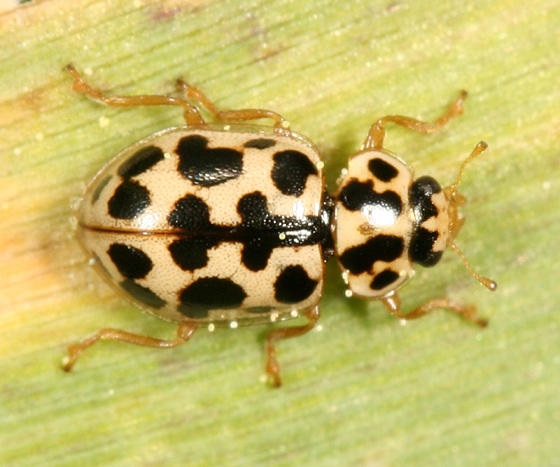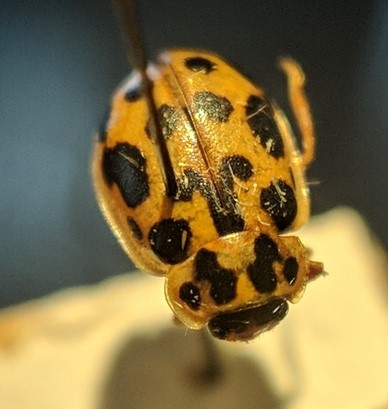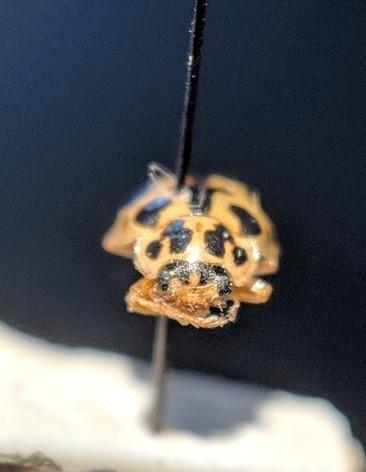
Marsh Lady Beetle © Tom Murray

Marsh Lady Beetle © VCE
The Marsh Lady Beetle, also known as the Swamp Lady Beetle, is native to the United States and Canada. It’s found primarily in damp areas with low-growing vegetation. Its wing covers are primarily cream colored with black spots.
Status
Native
Ranked as Imperiled in Saskatchewan; Vulnerable in Manitoba and the Northwest Territories; Apparently Secure in Ontario, Alberta, and British Columbia; and Secure in Labrador, Newfoundland, New Brunswick, and Nova Scotia. The Marsh Lady Beetle has not been ranked in the United States.
Last Seen
2021
Fun Fact
The Marsh Lady Beetle’s Latin name (Anisosticta bitriangularis) means “two triangles” (“bis” – twice; “trangularis” – of or belonging to a triangle). This refers to the two areas on this species’ pronotum where three spots are clustered in a triangular shape.
Identification
The Marsh Lady Beetle is 3 to 4 mm in length. It is very elongate in form and overall light yellow to light orange in color.
- Head: Black overall, with a pale patch resembling a crown between the eyes.
- Pronotum: Pale, with two irregularly-shaped, large black spots. These spots sometimes bleed together to form a large black patch.
- Elytra: Overall yellow to light orange in color. Usually 12 to 18 black, irregularly shaped spots. The spots on the sides of the elytra sometimes connect to form two bands, parallel to the suture (where the wing covers meet). Other times the spots bleed together to form a roughly horse-shoe shape across the elytra. Two black spots connect to form an irregular “T” shape across the suture at the top of the elytra, near the pronotum. Suture is occasionally black.
- Legs: Light orange.
- Often confused with: Twenty-spotted Lady Beetle, Fourteen-spotted Lady Beetle, Painted Lady Beetle.
Habitat
Low-growing vegetation in wetlands, marshes, bogs, and taiga. Can sometimes be found in forests, fields and meadows, presumably preferring those that are wet.
General Range
Labrador south to New Jersey, west to California, and north to the Northwest Territories and Alaska.
Food
Aphids and scale insects.
Life History
Based on iNaturalist data, the Marsh Lady Beetle seems to be encountered most frequently between June and August. Little information is available on this species.
More Information
You can find more information about Marsh Lady Beetles using the following links:
Vermont Distribution
Visit the iNaturalist Observation Map and Occurrence Records to find out where Marsh Lady Beetles have been seen in Vermont.







